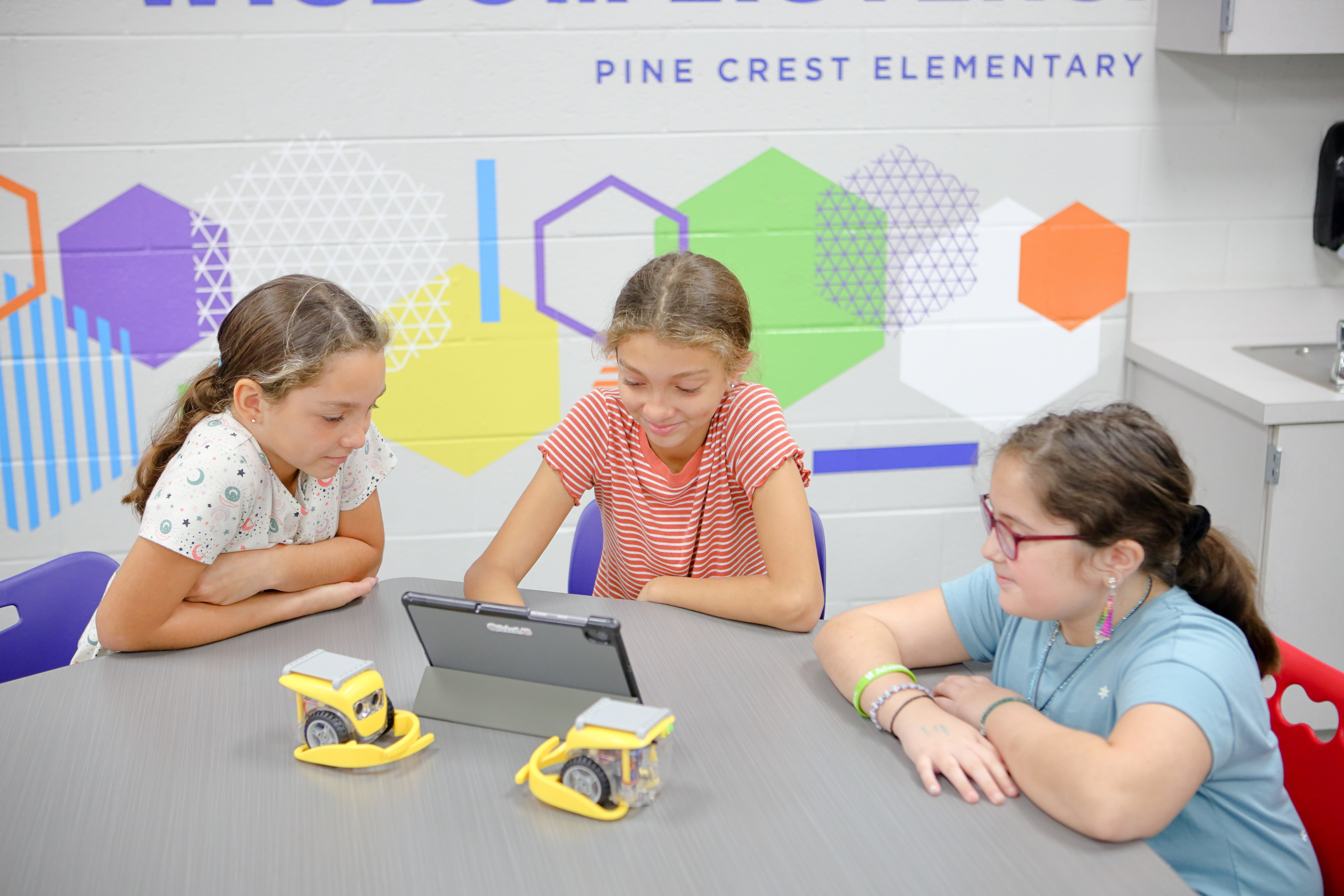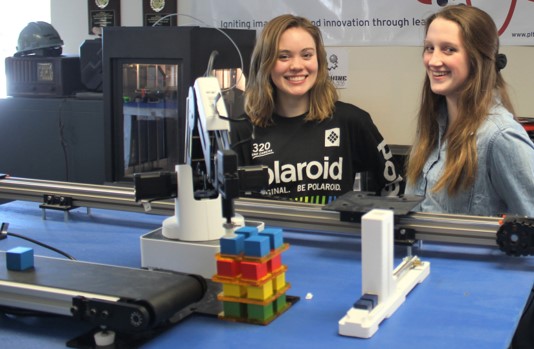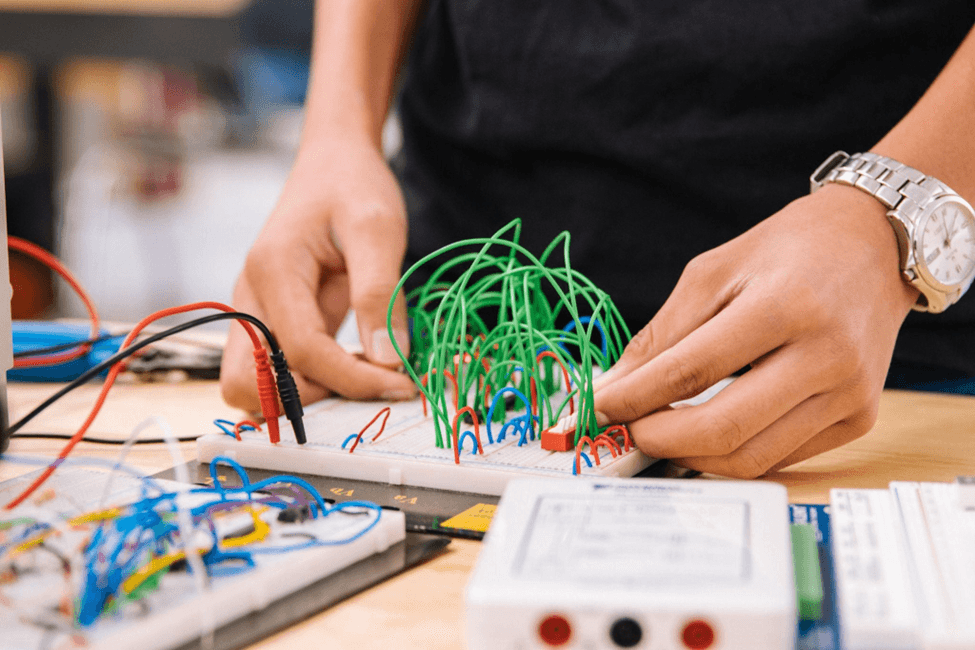Here is the STEM grants list for 2023!

At RobotLAB, we believe that every student deserves access to the latest technologies and learning tools to prepare them for the future.
As part of our commitment to supporting STEM education, we've compiled a list of existing and new grants that schools can apply for to invest in robotics technology and support their educational programs.
We understand that finding the right funding can be a challenge for schools, which is why we've done the research and put together a comprehensive list of STEM opportunities and resources to help you navigate the offerings available.
- 0 Comments
- May 11, 2023 3:27:21 PM
- Posted by Maria Alejandra Calcetero
- Topics: Robotics, EdTech, STEM, Education, code, 21st Century Classroom, Special Education, Artificial Intelligence, data literacy, Coding, Robots,, students, programming, Technology, VR, Realidad Virtual, STEMchat, Edchat, AI, k12, Virtual Reality, virtual learning, classroom, Inteligencia Artificial, Literacy, STEM literacy
Emphasizing the Importance of STEM to Students
By Devin Partida

Science, technology, engineering and math (STEM) make the world go round. It drives everything from medicine to spaceflight, enriching everyone’s lives and securing the future. If your students need further proof of STEM’s importance, here are several reasons it’s so valuable.
- 0 Comments
- Apr 12, 2023 6:41:41 PM
- Posted by Maria Alejandra Calcetero
- Topics: Robotics, EdTech, STEM, Education, code, 21st Century Classroom, Special Education, Artificial Intelligence, data literacy, Coding, Robots,, students, programming, Technology, VR, Realidad Virtual, STEMchat, Edchat, AI, k12, Virtual Reality, virtual learning, classroom, Inteligencia Artificial, Literacy, STEM literacy
How STEM Educators Can Prepare Students for Workforce Implementation of Robotics and AI
By Katie Brenneman
 Saint Leo University- AI Lab implementation by RobotLAB
Saint Leo University- AI Lab implementation by RobotLAB
Once upon a time, robotics and artificial intelligence (AI) systems were largely the stuff of science fiction. If they appeared in “real life,” it was primarily in the most advanced, technology-driven enterprises, those to which most ordinary working people had little, if any, connection.
Today, however, the situation has dramatically changed. Robotics and AI are now infiltrating almost every aspect of daily life. They’re shaping how we communicate and learn. They’re transforming the practice of medicine. And they’re even informing how we accomplish the most mundane of daily tasks from banking to shopping to cleaning the house.
- 0 Comments
- Mar 14, 2023 10:23:52 AM
- Posted by Maria Alejandra Calcetero
- Topics:
STEM Resources for Budding Engineers
By Katie Brenneman

There’s a dearth of good engineers out there. As technology evolves, so does its complexity. Just as important as maintaining the momentum of technological progress is equipping the next generation to pick up where the last one left off.
Part of our obligation today is creating and compiling keystone resources that will aid young engineers in their journey to achieve new breakthroughs. Herein lies the fundamental growth pillars of forward-thinking engineers in various verticals: science, technology, engineering, and mathematics (STEM). Something we must contend with is building up young engineers to be both technically and professionally proficient. Let’s explore a few perspectives and resources that can serve to educate budding engineers and prepare them for the world of tomorrow.
- 0 Comments
- Feb 21, 2023 2:06:44 PM
- Posted by Maria Alejandra Calcetero
- Topics:
Using Robotics to Support Sustainability
By Devin Partida

STEM educators have numerous tools at their disposal to keep students engaged with technology. It’s necessary in a tech-driven world, where students crave modern interactivity to maintain their attention and process concepts. Robotics is steadily becoming commonplace in classrooms as incorporation simplifies complex ideas and promotes sustainability to youth.
What can robotics offer STEM educators wanting to convey sustainable lessons to their students, and how can robots make a greener planet?
- 0 Comments
- Feb 10, 2023 2:31:02 PM
- Posted by Maria Alejandra Calcetero
- Topics: EdTech, STEM, Education, Computer Science, 21st Century Classroom, School, Student Engagement, Middle School, High School, autism, AI
How Robots Can Be Used in Autism Therapy
By Shannon Flynn

People are increasingly interested in how robots can help humans. From manufacturing facilities and complicated surgical procedures to preventing loneliness among older people and other isolated individuals, the possibilities are endless. Another area of significant interest relates to how robots could supplement therapy for people with autism. This approach is a developing option, but it’s already proving its worth.
- 0 Comments
- Feb 6, 2023 11:37:20 AM
- Posted by Maria Alejandra Calcetero
- Topics: EdTech, STEM, Education, Computer Science, 21st Century Classroom, School, Student Engagement, Middle School, High School, autism, AI
How to Secure Funding for STEM Extracurriculars
By Devin Partida

Maybe you have an amazing idea for a STEM extracurricular project, but you simply lack the budget needed to make it a reality. Here are the words you probably don’t want to hear: You have to write a grant proposal. Though it may seem daunting, as an educator, you already have the necessary skills to draft a compelling grant submission and secure the funds you need. Let’s get started.
- 0 Comments
- Nov 17, 2022 10:00:00 AM
- Posted by Maria Alejandra Calcetero
- Topics: EdTech, STEM, Education, Computer Science, 21st Century Classroom, School, Student Engagement, Middle School, High School, AI
Promoting Diversity and Inclusion in Robotics
By Carol Grace

Compared to other careers, underrepresentation is rampant in STEM-related roles. According to job statistics by Pew Research Center, Black and Hispanic workers remain underrepresented in various STEM occupations, only making up 8-9% of STEM jobs. This share is lower in specific job clusters, such as engineering and architecture, with only 5% of black workers making up the total workforce. While women comprise 50% of the STEM workforce, 74% are healthcare practitioners and technicians — making other fields vastly outnumbered by men. With robotics highly dependent on computers and engineering, it’s unsurprising that diversity in the industry is at an all-time low.
- 0 Comments
- Nov 16, 2022 7:48:57 AM
- Posted by Maria Alejandra Calcetero
- Topics: EdTech, STEM, Education, Computer Science, 21st Century Classroom, School, Student Engagement, Middle School, High School, AI
Using Robotics to Teach About Cybersecurity
By Devin Partida Photo by Dan Nelson on Unsplash
Photo by Dan Nelson on Unsplash
Curricula must shift for educators to create a well-informed next generation of cybersecurity analysts. Though robotics is an umbrella containing many branches, K-12 teachers can use robotics to teach cybersecurity more effectively than other subjects.
- 0 Comments
- Oct 6, 2022 3:11:12 PM
- Posted by Maria Alejandra Calcetero
- Topics: EdTech, STEM, Education, Computer Science, 21st Century Classroom, School, Student Engagement, Middle School, High School, AI
Integrating Robotics into Health Sciences Courses
By Dan Matthews
 Image Source: www.unsplash.com
Image Source: www.unsplash.com
The marriage between health science and technology has been a long and happy one. However, that union has perhaps never been more important than it is today. Now, more than ever, state-of-the-art technologies, from bioengineering to artificial intelligence (AI), are playing a leading role in optimizing patient care, supporting healthcare providers, and expanding the scope of medical knowledge.
Among the most significant and promising of these technologies in the domain of health, sciences are robotics.
These technologies are not only increasingly being used in clinics, hospitals, and operating rooms, but also in health sciences classrooms at every level, including primary, secondary, and post-secondary education. This article explores the reasons why you should begin integrating robotics into your health sciences courses and identifies key strategies for doing so.
- 0 Comments
- Mar 14, 2022 10:00:00 AM
- Posted by Maria Alejandra Calcetero
- Topics: Robotics, EdTech, STEM, Education, code, 21st Century Classroom, Special Education, Artificial Intelligence, data literacy, Coding, Robots,, students, programming, Technology, VR, Realidad Virtual, STEMchat, Edchat, AI, k12, Virtual Reality, virtual learning, classroom, Inteligencia Artificial, Literacy, STEM literacy
Relevant Posts
Popular Posts
Subscribe to Email Updates
-
I Want To Learn MoreADDITIONAL INFORMATION


